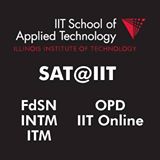1. “Outside-In” Accelerates
In today’s highly interconnected markets, many of the most important new business forces are taking shape outside the walls of your enterprise. To respond effectively to these changes, you’ll need a shift in mind-set, from inside-out to outside-in: leveraging innovation and technology outside your enterprise, from cloud to bring your own technology (BYOT) to cocreation and more.
A year ago, many business leaders found it difficult to accept this new outside-in reality. Now we’re finding that the outside-in trend is not only accepted, but also being put into action. In fact, we consider outside-in to be the megatrend from which the other five trends flow.
2. Industry Ecosystems Emerge
One manifestation of the outside-in trend is what we call cocreation. Partners, clients and vendors are creating ecosystems to provide deep analytics, market sensing, planning and co-creation of products and services to ensure that needs are rapidly sensed and met. Partners in a broad ecosystem can together fulfill those needs. Value is shared among multiple partners, not a single participant.
Initially, these ecosystems focused on the “Internet of Things” (IoT) and what some call the Industrial Internet. But now their reach has broadened. We’re seeing ecosystems form around digital insurance, payment systems, healthcare, transportation and more. Companies such as Uber and Airbnb are massively disruptive. Expect to see many disruptive ecosystems form in traditional vertical markets, where partners can address the emergent needs of clients driven by big data and analytics better than going it alone.
3. Big Data Analytics Enters the Boardroom
Last year, we spoke of big data’s need to get fast. That’s happening, with business analytics increasingly available in near-real time, thanks in large part to advances in nonrelational databases and other key technologies. Now big data is also moving into the boardroom. A new digital leadership, led by tech-savvy “double deep” executives who know technology and the business, is demanding quantitative insights into customers, products and partners. These executives are necessary to help navigate disruption, increase the enterprise’s focus on analytics, and form deep partnerships to create value.
Again, this shift is being driven by the larger outside-in trend. While early implementations of big data were homegrown, today many analytics solutions are available from vendors and partners. Similarly, much of the data that the new breed of digital leadership requires is coming from outside the organization. For example, how well is a product performing in the marketplace? Who are potential partners, and how well are they delivering against their most important performance metrics? These are new, outside-in ways of creating value.
4. “3rd Platform” Shift Deepens the Critical Skills Gap
The “3rd Platform,” driven by SMAC (social, mobile, analytics and cloud), generates a wide skills gap versus traditional IT skills. On the one hand, organizations are facing competitive pressure to modernize their older back-office systems. These systems need to be run more economically, and they need to be more agile. On the other hand, today’s connected consumers are demanding innovative front-office applications that are both cloud-based and mobile.
This demand for transformation of systems brings with it a substantial reskilling across all IT skills, development, operations and procurement/contracts. In the past, it was enough for IT staff to develop the traditional skill sets needed to run and maintain highly stable systems. A bank’s payroll system, for example, wouldn’t change much from year to year, and neither would the skills needed to run it. But in today’s outside-in business environment, apps are updated frequently and are contextual, not static. That, in turn, requires IT staff to develop new skills, new levels of agility and new mindsets.
2015 is going to be a [re]balancing act between providing the right incentives for front-office activity/systems of engagement for growth and making appropriate investments to modernize back-office core processes to meet the information demands of the new systems as well as the increased operating tempo/cost/agility requirements.
5. Digital Leadership Becomes More Defined
Increasingly, business and IT executives need to be proficient in both technology and business, and not — as in the past — just one or the other.
The rise of the chief digital officer (CDO), a relatively new job title, reflects this growing need. CDOs need to be in tune with technologies that provide short cycle times for rapid growth, market sensing, analytics and response to markets. They need to understand mobile and other front-office systems that promote customer engagement and collaboration. CDOs also need to understand the requirements of both older back-office systems and regulatory compliance, and be ready to modernize these systems to deliver savings and agility while maintaining the expected stability.
Not all functional CDOs will hold the CDO title. Officially, they may be CTOs, CIOs or CMOs. But whatever their titles, CDOs will be expected to create and manage digital disruption. Expect to see CDOs emerge not only in the executive ranks but also on firms’ boards of directors.
6. SMAC Meets the Internet of Things
SMAC is moving the enterprise from the office out into the larger world. SMAC has a symbiotic relationship with Internet of Things, each supporting the growth of the other. IoT will act as an accelerator for SMAC as more devices come online, and it will add value to SMAC because of the increased context these devices bring us, empowering organizations to conduct new, different kinds of conversations with their customers.
So, whether it’s iBeacons that sit in stores to watch and reward high-loyalty customers, or small devices that sit in your car to monitor your driving for safe-driver insurance discounts, or healthcare and health-fitness devices that record your behavior for discounts on health insurance and wellness programs, we’re going to see the SMAC engagement platform substantially increase with these connected devices.
Further, the analytics will become ever more complicated around these new contexts, which are going to lend even more information to the decision-making process. In addition, connected things will generate entirely new data that leading organizations can analyze for data-driven decisions, operations and insights.

